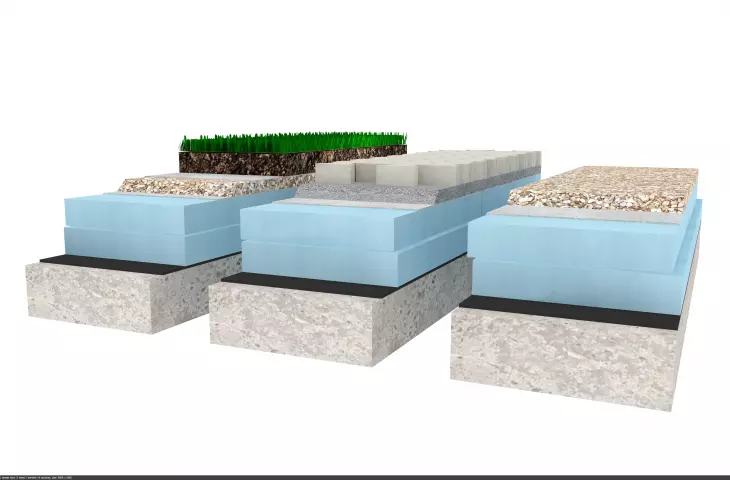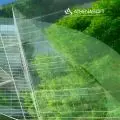RAVATHERM XPS - insulation boards from Ravago.
From the series "Roofs, roof accessories - trends 2023".
Utility flat roofs such as green roofs, roof terraces and rooftop parking lots are most advantageously made as an inverted flat roof. By using inverted roof technology, it is possible to ensure the long-term, safe use of the roof and benefit from the inverted layer system. Such a roof must always be carefully planned to meet current and future requirements and regulations related to ensuring proper thermal insulation parameters.
© Ravago
Ravatherm XPS thermal insulation with thicknesses above 20 cm
For newly constructed or renovated buildings in flat roofs, thermal insulation with thicknesses of 24-28 cm is required to meet high energy standards. Ravago Building Solutions is keeping up with the increasing demands through continuous product development. The product catalog includes extruded polystyrene foam thermal insulation with thicknesses reaching up to 32 cm.
© Ravago
The current stricter thermal requirements for flat roofs can only be met by thermal insulation with a thickness of more than 24 cm. Ravago Building Solutions is keeping up with trends through continuous product development. Currently, Ravago offers RAVATHERM XPS extruded polystyrene insulation boards in thicknesses above 20 cm: 20, 22, 24, 26, 28 cm. These products are produced based on a special thermobonding process that allows to obtain homogeneous thermal insulation panels with thicknesses up to 28 cm. Thanks to this production method, the structure of Ravatherm XPS extruded polystyrene boards retains its homogeneous properties, and the thermal conductivity coefficient remains perfect throughout the thickness range, and is no greater than 0.035 W/mK, even for a 32 cm thick material. In practice, therefore, when using RAVATHERM XPS single-layer thermal insulation on an inverted roof, a U-value of less than 0.15 W/m²K can be achieved, which, among other things, meets the requirements for passive houses. Thermobonding technology will allow Ravago to expand its product range in the future with thicknesses of up to 40 cm.
© Ravago
Requirements for thermal insulation of an inverted roof
In addition to good thermal insulation properties, it is equally important that the insulation products used in inverted roofs have moisture resistance, non-absorbability and excellent mechanical strength parameters.
© Ravago
A characteristic feature of inverted roofs is that the waterproofing is located directly on the load-bearing roof slab under the thermal insulation layer. As a result, it is not exposed to harmful atmospheric agents and mechanical damage. Due to the fact that the waterproofing works at a constant temperature, close to the temperature of the interior - it also acts as a vapor barrier. Therefore, it becomes unnecessary to install an additional layer of vapor barrier, thus reducing the number of layers.
© Ravago
Above the vulnerable waterproofing, thermal insulation boards made of extruded polystyrene foam are laid, which, in addition to their insulating function, also perform a protective function.
© Ravago
Since thermal insulation is laid above the waterproofing, it is exposed both during installation and operation to a number of adverse factors: mechanical loads, atmospheric factors (such as rain, moisture, temperature changes, freeze-thaw cycles). Therefore, thermal insulation materials used for inverted roofs should be resistant to these factors.
© Ravago
Ravatherm XPS thermal insulation is characterized by:
- very low water absorption, and both in the process of immersing the boards in water and through vapor diffusion,
- insensitivity to freezing and thawing cycles
- very high compressive strength
© Ravago
Many years of experience in using Ravatherm XPS blue extruded polystyrene foam products as thermal insulation for inverted roofs proves that they are reliable in this application.
Inverted roof technology is used both in non-utility roofs - ballasted with gravel and utility roofs, such as green roofs, terraces, roof parking lots.
© Ravago
For more information, visit the company's website {tag:Manufacturer}
and on the dedicated Ravatherm XPS page.











































